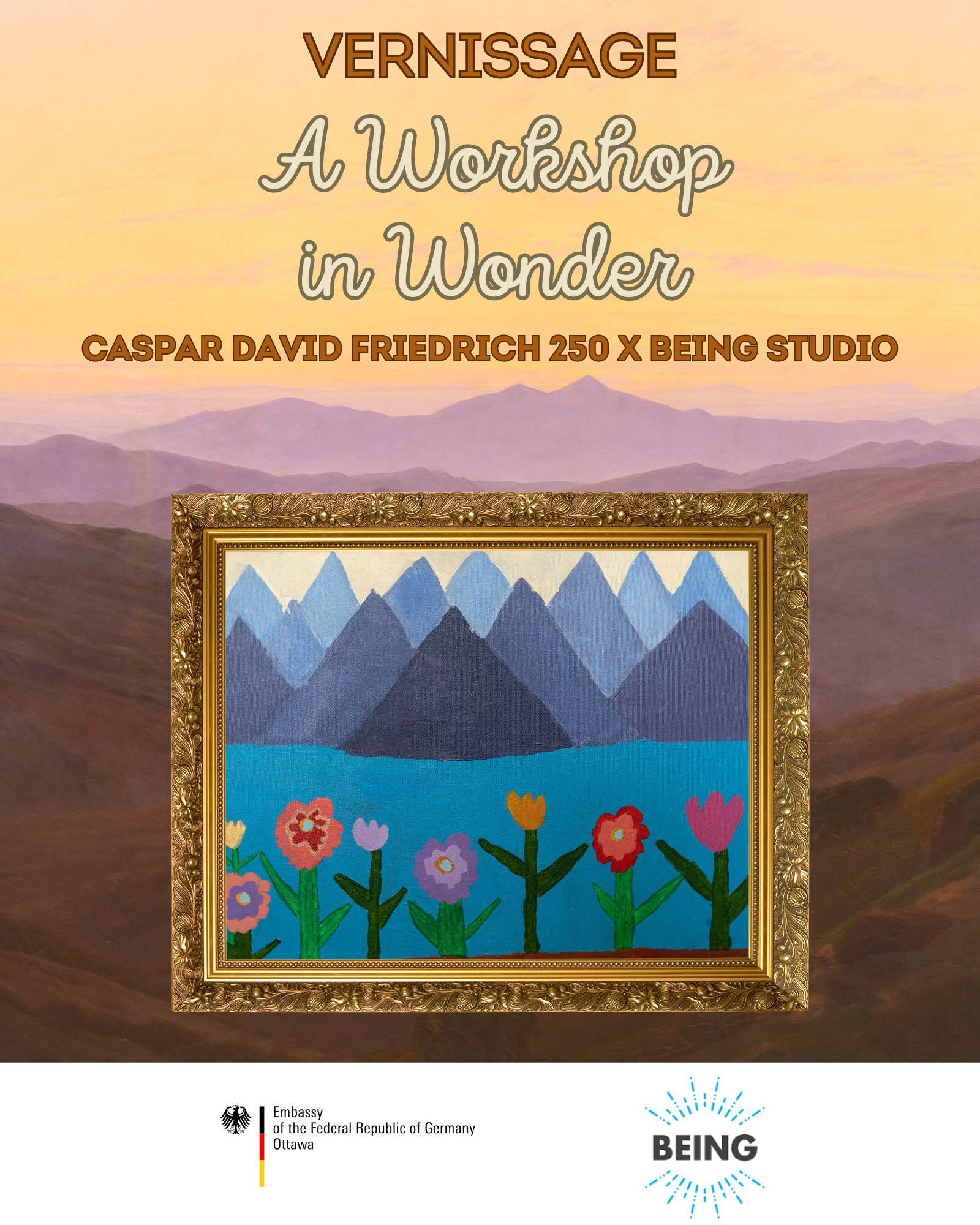
A Workshop In Wonder
In a unique collaboration between the German Embassy in Ottawa and BEING Studio, a group of talented artists with with developmental disabililties embarked on a creative journey inspired by the renowned German Romantic painter, Caspar David Friedrich. Led by the visionary Paul Schibli, a renowned animator and artist, the workshop aimed to explore Friedrich’s themes of nature, emotion, and spirituality through the lens of contemporary artistic expression.
The results of this inspiring workshop are showcased in a special exhibition, featuring a collection of 11 captivating paintings. Each piece offers a fresh perspective on Friedrich’s work, infused with the distinctive voices and styles of the BEING Studio artists.
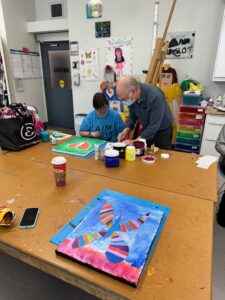
About BEING Studio
BEING Studio, founded in 2002 under the name H’Art of Ottawa, is a dedicated space supporting artists with developmental disabilities. The studio provides artists with the necessary resources, tools, and representation to create and commercialize their visual art and creative writing.
Each artist is encouraged and supported in achieving their unique creative and professional goals, whether it’s to become more prolific, profitable, or simply to find focus for their creative practice. BEING artists actively contribute to the cultural life of the city through regular exhibitions and collaborations with guest artists.
About Paul Schibli
Paul Schibli, the visionary behind the workshop, is a renowned animator and artist with a passion for storytelling and visual expression. Born in Montreal, Quebec, Schibli’s early interest in art led him to a career in animation, where he worked on iconic series like The Raccoons and directed the theatrical feature, The Nutcracker Prince.
Schibli’s artistic journey has also included watercolor, pastel, and oil painting. Over the past decade, he has transitioned to full-time artist and has exhibited his work extensively, including at Canvas Gallery in Toronto. Schibli also shares his passion for art by teaching in the town of Russell.
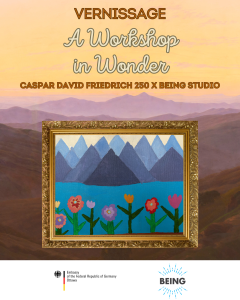
A Testament to Artistic Expression and Inclusion
The workshop and subsequent exhibition serve as a powerful reminder of the boundless creativity and unique perspectives that artists with developmental disabilities bring to the world. Through their artwork, these individuals challenge conventional boundaries and contribute immeasurably to cultural dialogue.
The Enduring Legacy of Caspar David Friedrich
Caspar David Friedrich’s iconic paintings continue to captivate audiences worldwide. From selfies in nature to fantasy world-building games, his works serve as a constant source of inspiration. Despite their challenging and often radical themes, Friedrich’s paintings offer a captivating blend of beauty, emotion, and thought-provoking questions.
Friedrich’s legacy is being celebrated on the 250th anniversary of his birth. Three major museums with extensive collections of his works have joined forces to offer unique presentations shedding light on different aspects of his artistic journey.
This collaboration between the German Embassy in Ottawa and BEING Studio is a testament to the importance of fostering inclusive spaces for artistic expression and celebrating the diversity of voices in the art world.
The Artists’ Creations
Emmanuel Asrat’s “A Friend, Bunny”: Asrat’s vibrant painting of a bunny hopping through a field showcases his ability to capture the joy and innocence of nature. The bright blue sky and green grass create a cheerful atmosphere, while the detail in the bunny’s brown eye and whiskers adds a touch of realism. The story of the bunny’s encounter with a coyote adds a layer of drama and emotion to the piece.

Malinda Caron’s “Night Owl”: Caron’s painting of a night owl under a starry sky evokes a sense of mystery and tranquility. The use of bright colors and lights creates a visually striking composition, while the symbolism of the night and the moon adds depth to the piece. Caron’s personal connection to the night sky, as evidenced by her childhood memories of glow-in-the-dark stars, makes the painting even more meaningful.
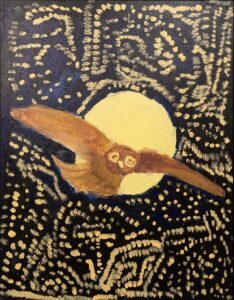
Anna Coulombe’s “Springtime”: Coulombe’s painting of springtime is a celebration of new life and hope. The use of vibrant colors and symbols such as flowers, mountains, and the sun creates a sense of optimism and joy. The painting’s simple yet effective composition highlights the beauty of nature and the power of renewal.
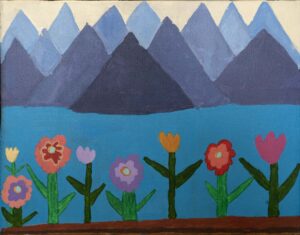
Jenny Francis’ “Pidgey”: Francis’ painting of Pidgey, a flying Pokémon, showcases her love of fantasy and imagination. The use of bright colors and a playful composition creates a visually appealing and engaging piece. The painting’s connection to the popular Pokémon franchise adds a layer of nostalgia and familiarity.

Christine Hammond’s “In My Mind”: Hammond’s abstract painting explores the concept of self-expression and personal identity. The use of symbols such as peace signs and dreams of creativity reveals Hammond’s inner thoughts and aspirations. The painting’s unique style and composition demonstrate Hammond’s willingness to step outside of her comfort zone and experiment with new artistic techniques.
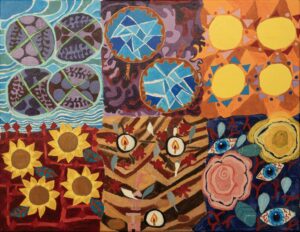
Jessie Huggett’s “Peace in Nature”: Huggett’s painting of a peaceful natural scene reflects her love of nature and her desire to become a natural scientist. The use of yellow mountains and a pink butterfly to symbolize happiness and peace creates a harmonious and uplifting composition. The painting’s simplicity and beauty highlight the power of nature to bring peace and tranquility.
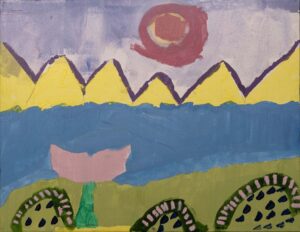
Analisa Kiskis’ “Heart-Shaped Necklace and a Mexican Sugar Skull”: Kiskis’ painting is a celebration of community and culture. The heart-shaped necklace with a sugar skull face is a unique and visually striking image that conveys a message of love and connection. The use of vibrant colors and symbols such as red for passion and green for the present and future adds depth and meaning to the piece.

Debbie Ratcliffe’s “The Dragonfly That Loved Me”: Ratcliffe’s painting is a personal and heartfelt tribute to a dragonfly that landed on her. The use of vibrant colors to depict the dragonfly’s wings creates a beautiful and evocative image. The story behind the painting adds a layer of emotion and personal significance to the piece.
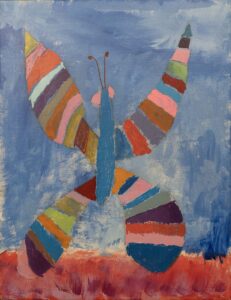
Emilia Valerio’s “Caged Life”: Valerio’s painting is a powerful expression of the challenges faced by individuals with Autism. The use of a cage and chains to symbolize limitations and restraints creates a visually striking and thought-provoking image. The inclusion of crow’s wings to represent freedom and the use of light and dark colors to symbolize hope and despair adds depth and complexity to the piece.

Alexa Vanveen’s “Love to Bake”: Vanveen’s playful and colorful painting celebrates her love of baking. The use of symbols such as cookies, muffins, and dog treats creates a visually appealing and inviting composition. The painting’s bright colors and positive energy reflect Vanveen’s enthusiasm for her hobby.
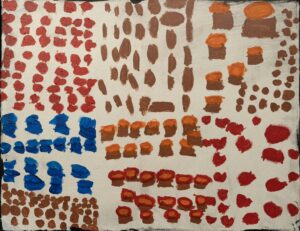
Big Family Tree by Devin Waldie was inspired by ‘The Lone Tree’ by Caspar David Freidrich:

Each painting offers a unique perspective on the world and a glimpse into the artists’ personal experiences and emotions.
